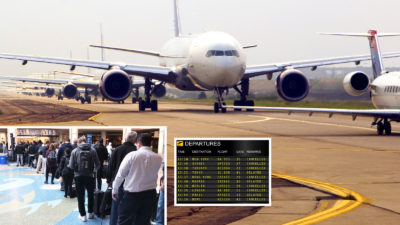Poor job market led physics major to work on F-35 helmet mounted display
By Debra Werner|May 2019
Alex Dauenhauer, 32, systems engineer, Collins Aerospace
Alex Dauenhauer had no career aspirations before attending high school in Tualatin, Oregon. There, he found a career path that carried him through college. After graduating into a historically dismal job market in 2010, Dauenhauer worked as a laboratory technician before landing a job with Rockwell Collins, which became Collins Aerospace. Now, Dauenhauer works on helmet mounted displays for Lockheed Martin’s F-35 stealth fighter, fine-tuning the luminosity of images produced with organic light-emitting diodes, carbon-based materials that turn electricity into light.
How did you become an engineer?
My high school physics teacher sparked my interest in math and problem-solving. Not only did I enjoy solving problems with math, I realized I was good at it. In 2010, I graduated from Oregon State University with a Bachelor of Science in physics. After the financial collapse in 2008, it was very difficult to find a job in the field of physics. I worked as a lab technician for Nike Golf, then moved to a company called Williams Controls, which was purchased by Curtiss-Wright. Eventually, I was offered a position as an optical technician at Rockwell Collins (now Collins Aerospace). After working on the F-35 helmet mounted display sustaining team, which handles production issues, I was hired as an engineer in the optical engineering department. After a few years there, I moved into my current position working on the F-35 helmet mounted display, a product that gives pilots unparalleled situational awareness. I spend most of my time ensuring displays offer pilots consistent video presentation at desirable brightness levels. This allows them to be more successful during night missions, such as aircraft carrier landings under overcast night skies, without display symbols such as altitude and horizon line obstructing their field of view.
Imagine the world in 2050. What do you think will be happening in aviation?
Speaking for myself and not for Collins Aerospace, I believe artificial intelligence will have likely superseded human intelligence by 2050. I imagine we will see autonomous flight as the norm rather than the exception. Camera systems will become more tightly integrated into aircraft design, and computer vision techniques will be trained to allow for the many difficult situational decisions that pilots currently are required to make. I would think we will see advances in electric motor technology as well, and the aviation industry will be forced to move to renewable fuel sources by this time.








